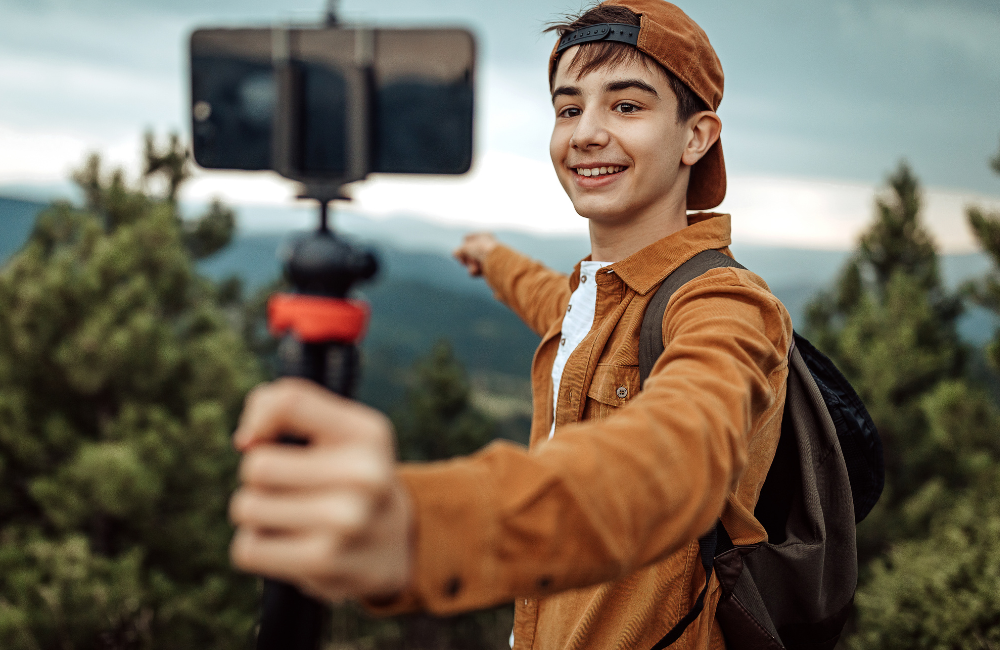Looking for some awesome tech gadgets and apps for hiking?
I love a good map and a sturdy pair of boots, but I’m not allergic to smart tech. Used well, gadgets make hikes safer, simpler, and (yes) more fun.
Below is my current, slightly nerdy stack: practical, field-tested, and written from the trail. I’ve kept it punchy and personal so you can skim, grab ideas, and get outside.
Ready for my list of the best tech gadgets and apps for hiking?
Let’s roll.
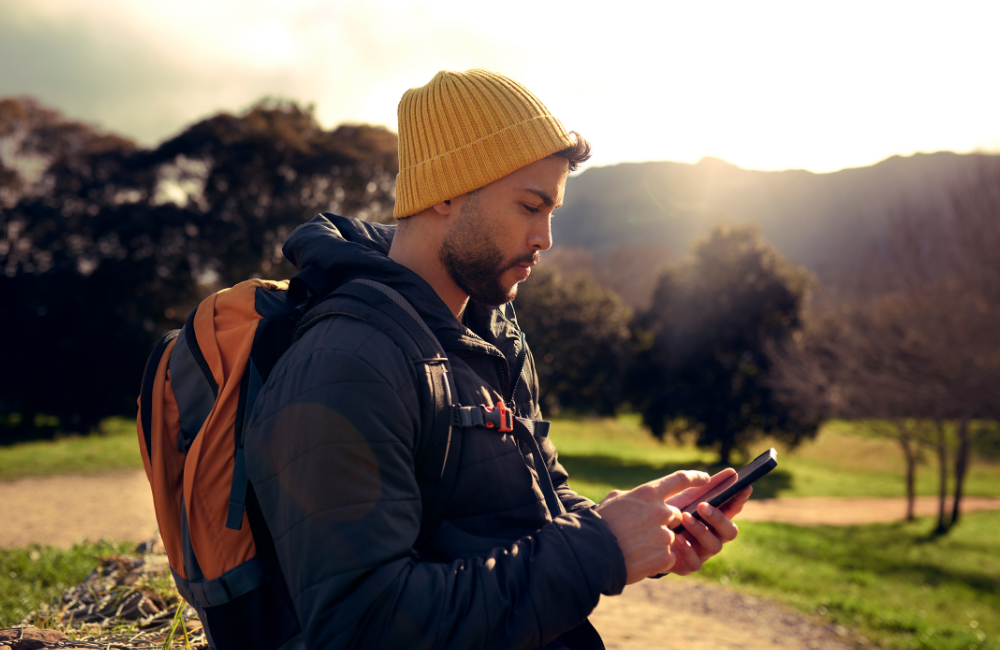
8 Tech Gadgets and Apps for Hiking You Can’t Miss
Time to get practical. Below is my real-world shortlist, beginning with the quiet hero that unlocks maps, weather and check-ins: an eSIM.
1. eSIM (Quick Travel Data for Your Tech)
You can’t enjoy tech without data, right? When I’m hopping countries, eSIMs mean I land, scan, and I’m online before baggage claim.
It’s brilliant for downloading offline maps, checking weather windows, or sending an “I’m safe” ping after a ridge walk.
If you’re weighing options, this guide breaks down plans, coverage, and perks clearly: Saily vs Holafly.
My pro tip: Activate your eSIM over Wi-Fi the night before you travel and immediately cache your maps. If anything goes sideways on arrival, you’re still set.
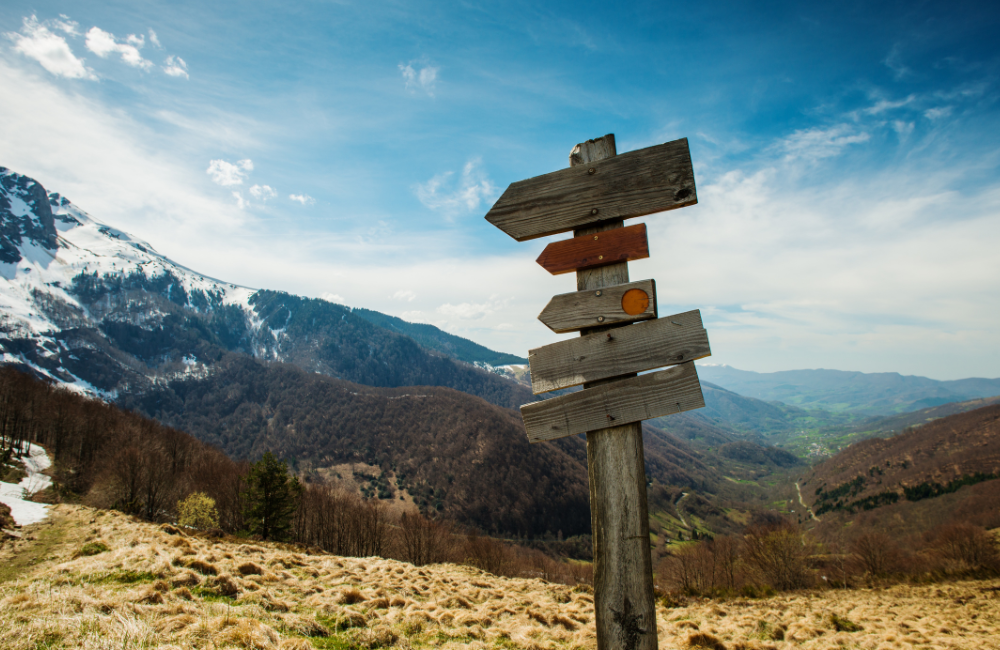
2. AllTrails (Route Discovery + Turn Alerts)
When I’m exploring a new area or need quick inspiration, AllTrails is where I start.
Filters for distance, elevation, and season make it easy to find a trail that fits my legs today.
AllTrails+ adds offline maps and turn-by-turn alerts. These are handy when the “path” looks suspiciously like a sheep track. Recent reviews still rate it as one of the most useful all-rounders for planning and navigating your next hike.
Quick note: Remember that community GPX lines can be slightly off. Always cross-check with a proper topo.
If you want to explore more hiking apps, check out my list of the best hiking apps around.
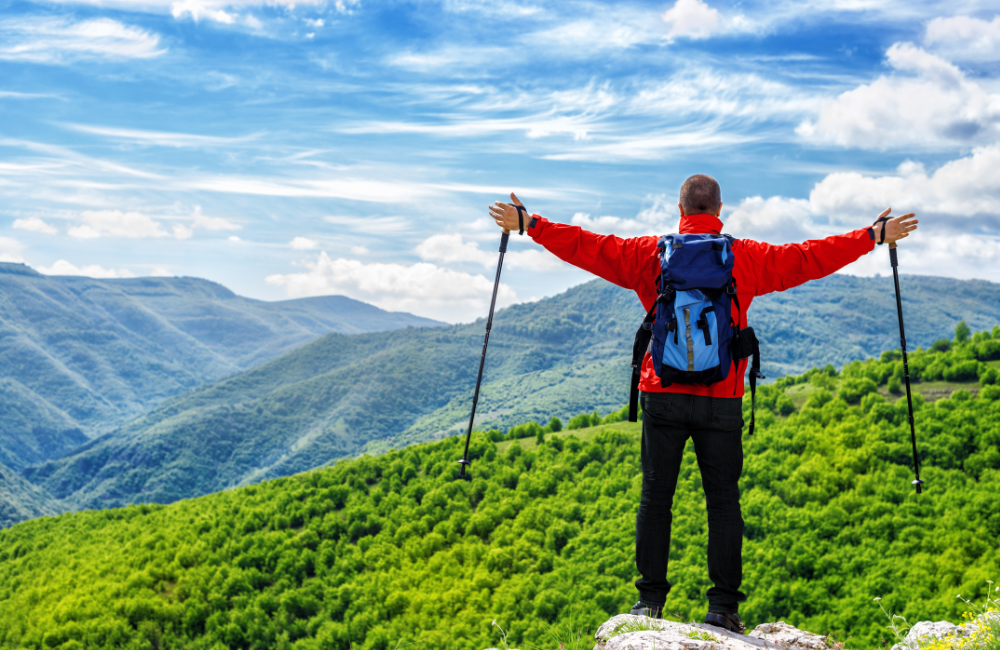
3. Gaia GPS (Robust Offline Maps)
For longer days and back-of-beyond routes, I switch to Gaia GPS.
It shines for layering topo, slope angle, and satellite imagery, and its offline downloads are rock-solid, as long as you grab the tiles before you go.
The help docs lay out exactly how to prep offline maps; do that while the kettle’s on.
Now that the maps are sorted, let’s talk about emergency communication.
4. Garmin inReach (Satellite SOS + Messaging)
We’ve already reviewed several Garmin gadgets on MountainIQ. You know I love Garmin for several reasons. Here’s why I will always include it in my tech and apps for hiking list.
Off-grid? I clip a Garmin inReach to my shoulder strap. The Mini 2 is small, offers global SOS via the Iridium network, tracking, and two-way messaging (with a subscription).
It’s not just for emergencies. I find it helps to bring peace of mind for partners at home and a lifeline if plans change.
Remember to always check out the official specs and manuals. The cover battery modes, waypoints, weather pulls, and more. But, here’s my point: Garmin works when phones don’t.
Garmin also released inReach Messenger Plus, adding photo and voice messages over satellite.
My pro tip: Subscriptions aren’t cheap. I pick a flexible plan and pause it between big trips.
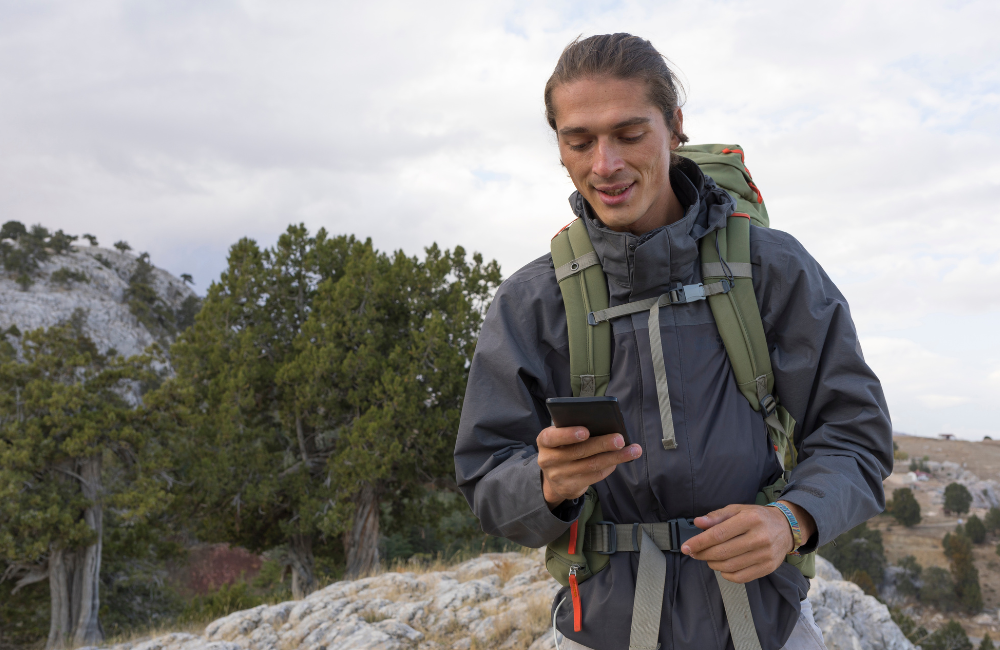
5. ACR ResQLink View (No-subscription PLB)
So what if you need to be rescued and can’t contact anyone? Meet my next favourite tech gadget: a personal locator beacon.
A Personal Locator Beacon like the ACR ResQLink View uses the 406 MHz COSPAS-SARSAT system and a 121.5 MHz homing signal to guide rescuers in.
If you’re like me and prefer a one-off purchase for worst-case scenarios, you’re in luck.
This one comes without messaging, but it’s rugged, simple, and subscription-free. I carry this on truly remote routes where “press once for rescue” redundancy feels wise.
A PLB is so important that I always include it in my essential hiking survival kit.
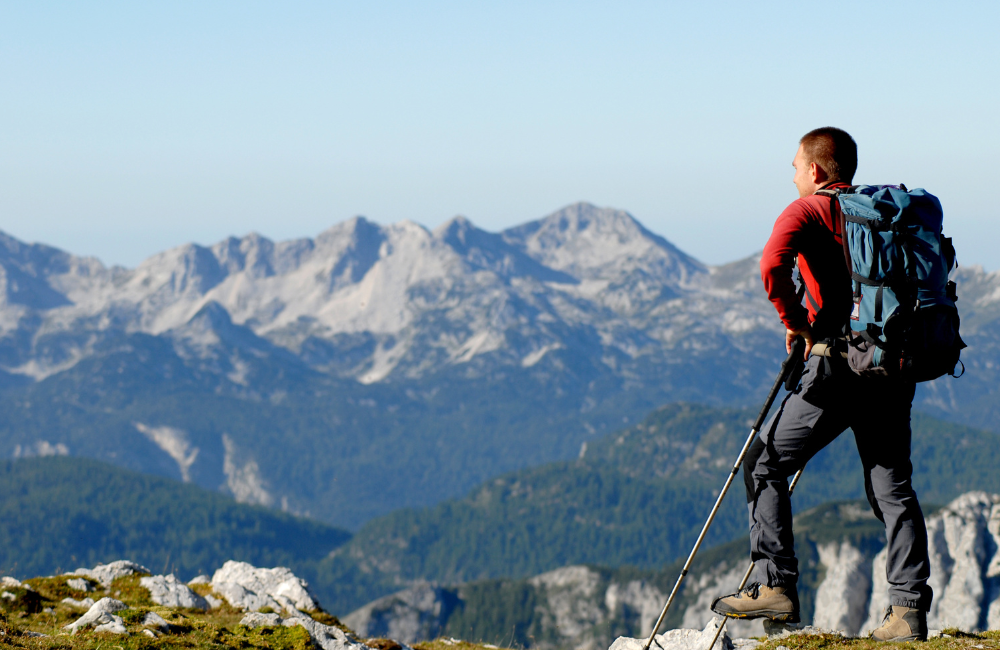
6. Nitecore NB10000 Gen2 (Featherweight Power Bank)
Power is freedom. The NB10000 Gen2 is a hiker favourite because it’s tiny, tough (carbon-fibre frame), and around 150g for 10,000 mAh.
That’s enough to top up your phone and your hiking headlamp across a weekend without feeling like you’ve packed a brick. What a win!
Oh, on the topic of hiking headlamps, check out this guide on the best hiking headlamps.
Let’s move on to the next item on my list of tech gadgets and apps for hiking.
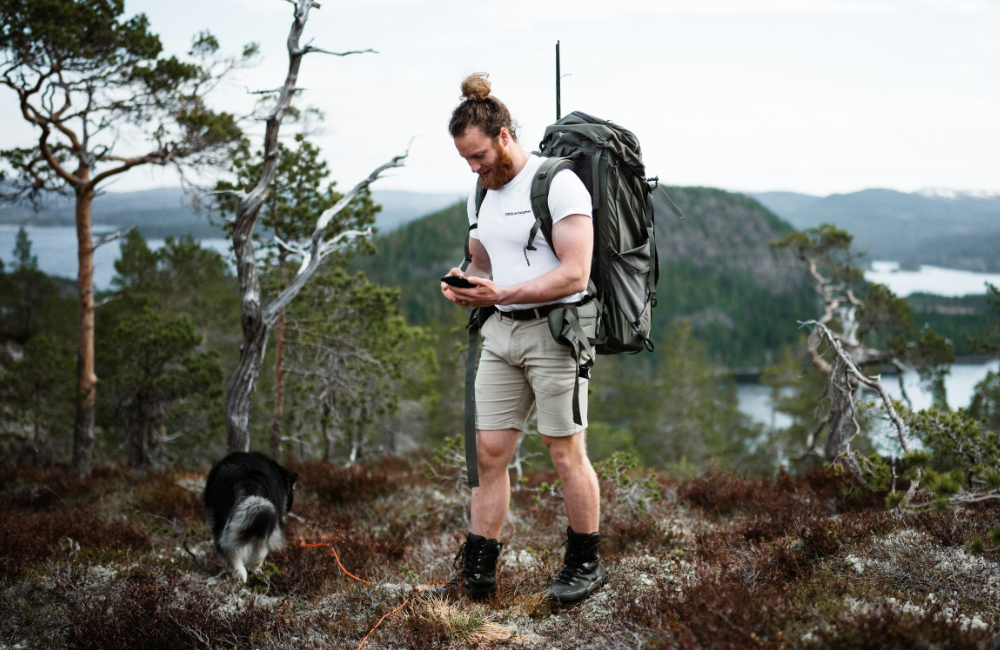
7. Starlink Mini (Basecamp Connectivity)
This is overkill for most hikers. I don’t haul it on day hikes, but for group expeditions, content work, or guiding in areas with zero signal, Starlink Mini is wild!
Just imagine: backpack-able satellite internet, clocking in at over 100 Mbps in fair conditions. And here’s the kicker: you can power it from a battery.
Yes, I know. It’s still pricey and not ultralight, but it’s changed how some teams handle comms and weather updates from camp.
I find it’s best used on small expeditions, remote photo/video workflows, or coordinating shuttles on multi-day routes.
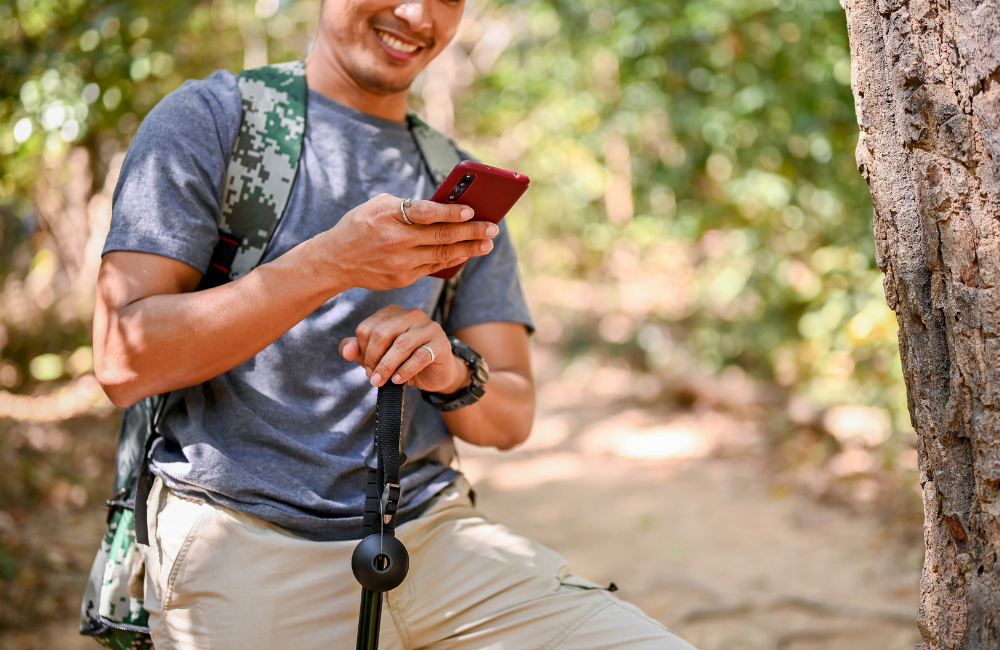
8. PeakFinder (Name Every Summit)
This app is a small joy, but comes with a big payoff!
PeakFinder uses your location and a simple augmented reality view to label the skyline. This is handy when you’re staring at five pointy things and pretending you definitely know which one is which.
It works offline once you’ve downloaded the data, and it’s a tidy teaching tool for newer hikers. I’ll often screenshot the labelled panorama and drop it into a trip report. It’s nerdy, but it helps friends orient themselves when planning the same route.
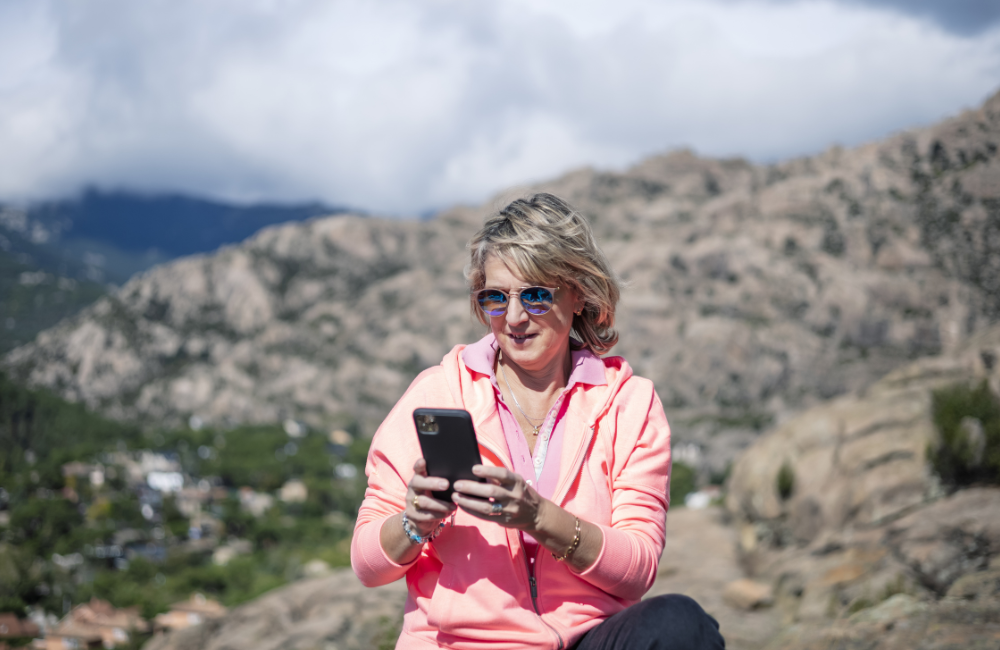
My Final Thoughts
Tech gadgets and apps for hiking should earn its weight. If it doesn’t make you safer, surer, or happier out there, it stays at home.
My baseline kit is simple: reliable offline maps, a power plan, and a satellite option when I’m beyond the last mast. Everything else is comfort and convenience.
Two final habits that’ve saved my bacon more than once:
- Redundancy beats bravado. Carry a paper map and compass. Batteries don’t care how epic the view is.
- Prep beats panic. Download tiles, set waypoints, and send your plan before you lace up.
Pack light, think clearly, and let the gadgets fade into the background so the mountains can take centre stage. That’s the whole point, isn’t it?

